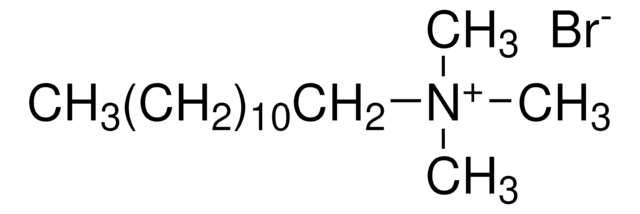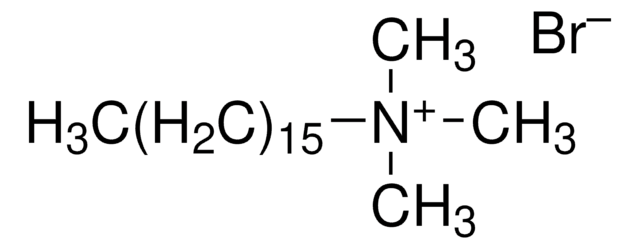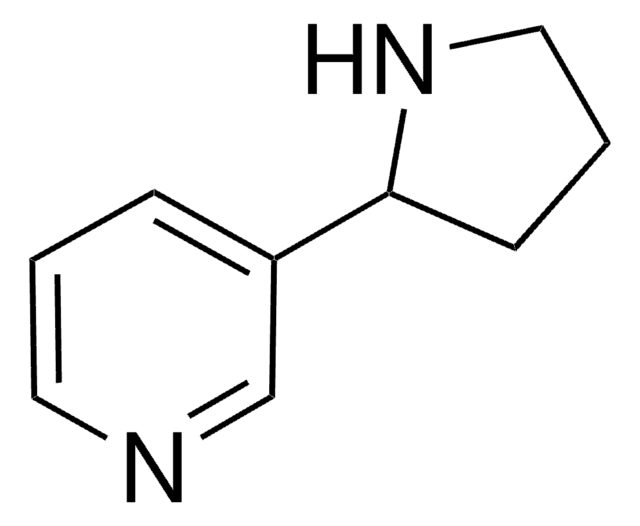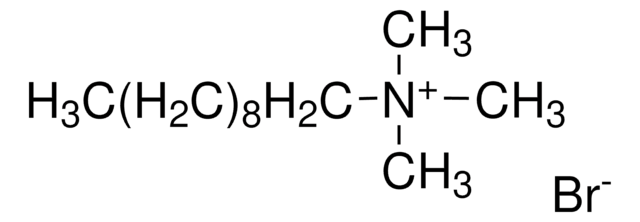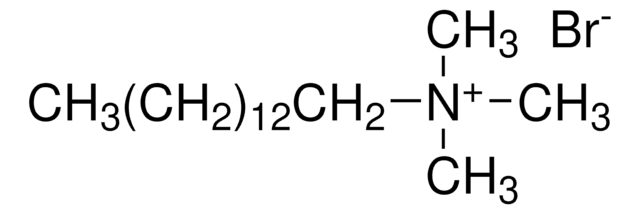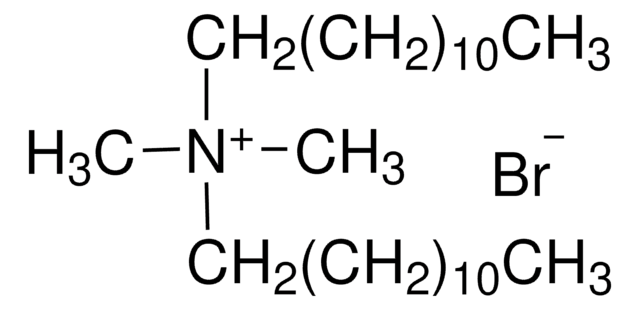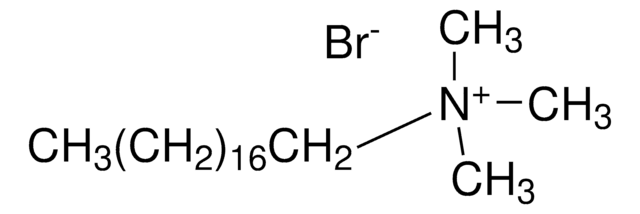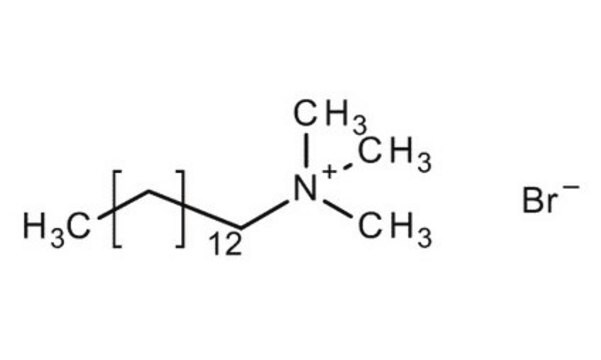D5047
Dodecyltrimethylammonium bromide
BioXtra, ~99%
Synonym(s):
Lauryltrimethylammonium bromide
About This Item
Recommended Products
description
cationic
Quality Level
product line
BioXtra
Assay
~99%
form
crystals
mol wt
308.34 g/mol
impurities
<0.001% Phosphorus (P)
<0.1% Insoluble matter
ign. residue
<0.1%
mp
246 °C (dec.) (lit.)
solubility
H2O: 0.1 M at 20 °C, clear, colorless
anion traces
sulfate (SO42-): <0.05%
cation traces
Al: <0.0005%
Ca: <0.0005%
Cu: <0.0005%
Fe: <0.002%
K: <0.005%
Mg: <0.0005%
NH4+: <0.1%
Na: <0.005%
Pb: <0.001%
Zn: <0.0005%
SMILES string
[Br-].CCCCCCCCCCCC[N+](C)(C)C
InChI
1S/C15H34N.BrH/c1-5-6-7-8-9-10-11-12-13-14-15-16(2,3)4;/h5-15H2,1-4H3;1H/q+1;/p-1
InChI key
XJWSAJYUBXQQDR-UHFFFAOYSA-M
Looking for similar products? Visit Product Comparison Guide
General description
Application
Signal Word
Danger
Hazard Statements
Precautionary Statements
Hazard Classifications
Acute Tox. 3 Oral - Aquatic Acute 1 - Aquatic Chronic 1 - Eye Irrit. 2 - Skin Irrit. 2
Storage Class Code
6.1C - Combustible acute toxic Cat.3 / toxic compounds or compounds which causing chronic effects
WGK
WGK 3
Flash Point(F)
Not applicable
Flash Point(C)
Not applicable
Personal Protective Equipment
Choose from one of the most recent versions:
Already Own This Product?
Find documentation for the products that you have recently purchased in the Document Library.
Customers Also Viewed
Our team of scientists has experience in all areas of research including Life Science, Material Science, Chemical Synthesis, Chromatography, Analytical and many others.
Contact Technical Service